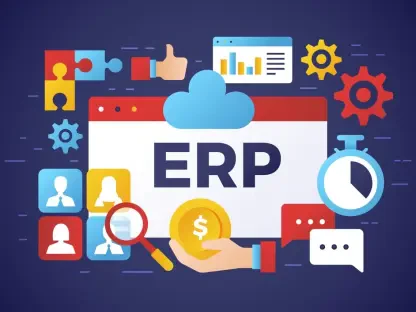I’m thrilled to sit down with Vijay Raina, a renowned expert in enterprise SaaS technology and software design. With his deep expertise in software architecture and thought leadership in the field, Vijay offers unique insights into how cutting-edge solutions like Oracle’s AI Data Platform are transforming businesses. In our conversation, we dive into the significance of integrating private data with AI, the benefits of pre-built tools for SaaS users, the power of a full-stack approach, and what AI transformation truly means for organizations today.
Can you walk us through what Oracle’s AI Data Platform is and why it’s such a game-changer for businesses?
Absolutely. Oracle’s AI Data Platform is a comprehensive solution designed to help companies leverage their own data for AI-driven innovation. It’s a big deal because it bridges a critical gap—most AI models out there are built on public data and don’t understand the unique, private data that businesses rely on. This platform creates a unified environment where enterprise data, from workflows to processes, can be seamlessly combined with advanced AI models, enabling companies to reinvent how they operate and stay ahead of disruption.
What sets this platform apart from other AI tools currently available in the market?
What makes it stand out is its open and unified approach to managing enterprise data. Unlike many tools that function as standalone add-ons, this platform is deeply integrated with Oracle’s ecosystem. It’s built to bring AI directly into business processes rather than treating it as an afterthought. This means companies aren’t just adopting AI—they’re embedding it into their core operations, which is a much more powerful way to drive value.
How does the platform address the challenge of using private business data with AI, especially when many models don’t have access to that information?
That’s a key issue it solves. Most AI models, especially large language models, are trained on public data, so they lack context about a company’s specific operations or proprietary information. Oracle’s platform tackles this by creating a secure, integrated space where private data can be connected with AI. It allows businesses to build models or use pre-existing ones that understand their unique data, overcoming barriers like data silos or security concerns that often hold companies back.
Can you share a practical example of how this platform helps a business connect its unique data to AI?
Sure, imagine a retail company with years of customer purchase history and inventory data. Normally, this data might sit in separate systems, untouched by AI. With Oracle’s platform, they can integrate that information and use AI to predict buying trends or optimize stock levels. The platform ensures the AI understands the company’s specific data structure, so the predictions are tailored and actionable, not just generic guesses based on broad industry trends.
Let’s talk about the pre-integration with Oracle’s SaaS applications like Fusion and NetSuite. How does this setup accelerate value for customers?
Pre-integration is a huge time-saver. For customers already using Oracle’s SaaS applications, the AI Data Platform comes with variants tailored to those apps’ data models and workflows. This means businesses don’t have to start from scratch—they get predictive models, analytics, and AI agents ready to go out of the box. It cuts down the time-to-value significantly because the heavy lifting of aligning AI with business processes is already done.
What kind of flexibility do customers have to customize these pre-built tools to meet their specific needs?
Even though the tools are pre-integrated, there’s a lot of room for customization. The full platform sits underneath these out-of-the-box solutions, so companies can extend or tweak the models to fit their unique requirements. Whether it’s adjusting a predictive model for a niche market or building new agents for specific workflows, customers have the flexibility to make the AI truly their own while still benefiting from the head start that pre-integration provides.
Oracle emphasizes control over the full stack—from cloud infrastructure to applications and AI. Why is this end-to-end approach so critical?
Owning the full stack gives Oracle a unique edge. It means everything—cloud infrastructure, data platforms, applications, and AI—works together seamlessly. There’s no friction or mismatch between layers, which is a common problem when you’re piecing together solutions from different vendors. This tight integration allows for faster, more reliable deployment of AI use cases because the data, apps, and models are all speaking the same language, so to speak.
Can you provide a real-world scenario where this full-stack integration has made a tangible difference for a customer?
Definitely. Consider a manufacturing firm using Oracle’s SaaS apps for supply chain management. Because of the full-stack approach, their data platform already understands the workflows in the app. They were able to quickly deploy an AI agent to predict equipment failures based on historical data and real-time inputs from their systems. The integration between layers meant they didn’t have to spend months mapping data or troubleshooting compatibility issues—it just worked, and they saw downtime reductions almost immediately.
You’ve highlighted the goal of achieving AI transformation through a company’s own data. What does that transformation look like for a typical business?
AI transformation, at its core, is about fundamentally changing how a business operates by embedding AI into its decision-making and processes. For a typical company, it might mean moving from manual, reactive decisions to automated, predictive ones. Think of a finance team that used to spend hours on forecasting now getting real-time, data-driven insights from AI. It’s about becoming more agile, efficient, and competitive by leveraging the data they already have in ways they couldn’t before.
Are there specific industries or business functions where this kind of transformation is having the most impact right now?
We’re seeing significant impact in industries like retail, manufacturing, and healthcare, where data is abundant but often underutilized. In retail, it’s about personalizing customer experiences and optimizing inventory. In manufacturing, it’s predictive maintenance and supply chain efficiency. And in healthcare, it’s improving patient outcomes through better data analysis. Across all these, functions like finance and operations are also benefiting heavily from AI-driven insights.
For businesses just dipping their toes into AI, what’s the best way to get started with a platform like this?
The easiest way is to start small and focused. Look at a specific pain point or process where data could make a difference—like customer service or sales forecasting—and use the platform to address that first. Oracle’s pre-integrated tools are a great entry point because they lower the barrier to adoption. From there, businesses can scale up as they get comfortable with AI, leveraging the platform’s broader capabilities to tackle more complex challenges.
What’s your forecast for the future of AI-driven data platforms in enterprise settings over the next few years?
I think we’re on the cusp of seeing these platforms become the backbone of enterprise innovation. Over the next few years, they’ll evolve to be even more intuitive, with greater automation and smarter integration across diverse data sources. We’ll likely see AI become less of a specialized tool and more of an embedded part of every business process. The companies that thrive will be the ones who embrace platforms like this early, using their data not just to react to change, but to drive it.









